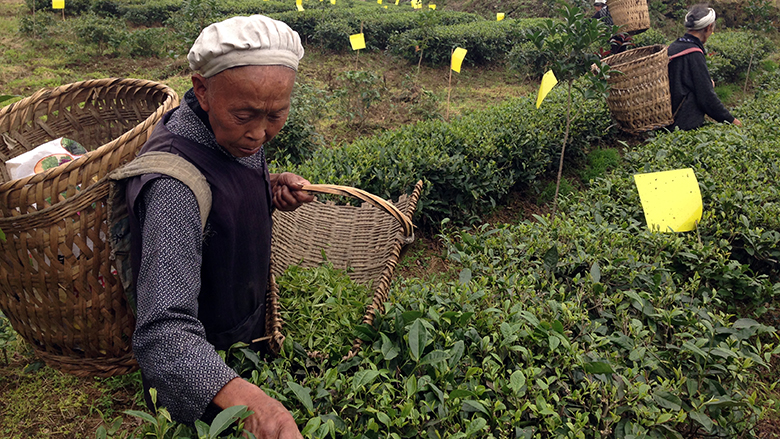Reducing Poverty in China by Connecting Farmers to Markets

China’s poorest province, Guizhou, stands land-locked in the southwest of the country with a population of 40 million. Roughly 40% of residents belong to ethnic minorities and 28% live below the national poverty line. To help reduce poverty, a World Bank-funded project established 38 new farmer cooperatives that connect farmers to markets and give them access to more modern agricultural commodity value chains.
The $140.51 million Guizhou Rural Development Project was financed by a World Bank loan of $100 million, with additional technical assistance from FAO Investment Centre. The project showed farmers in the 11 project counties in the municipalities of Bijie, Zunyi and Tongren new ways to restructure and modernize the agricultural production and processing activities.
The initiative complements the Chinese government’s poverty alleviation program for agricultural industrialization, which aims to develop local agriculture-based industries through the development of economic opportunities for rural poor households in partnership with various stakeholders in the value chain. Some cooperatives receiving support, such as the Sinan Egret Lake Eco-Park Professional Cooperative in Sinan County, include 100% of the registered poor households in their villages.
Poor households in remote rural areas are also being brought to participate in modern food value chains. Agribusiness enterprises play an important role in linking farmers to urban markets and building value chains that respond both to farmers’ and consumers’ needs.
One of the cooperatives in Shiqian which grows papaya and honeysuckle partnered with a business and has taken advantage of their marketing expertise to increase products’ sales value. “We no longer need to leave our families and move to the city to make a living. We can stay close to home and work by farming on the cooperative’s land, plus earn profits from cooperative produce that is sold to the markets,” explained Xiong Yong, Li Minghua and Huang Lixun as they described how their lives had improved since joining the cooperative about a year ago. The cooperative’s efforts have provided them with additional sources of income, improved their financial security, and enabled them to stay with their families in the countryside.
In Weining county, a large national company in the poultry business has partnered with a local cooperative and assisted in product branding, marketing, and provided quality inputs such as feed stock, baby chicks, and treatment for poultry diseases. The operation created job opportunities and its profits have increased incomes for the cooperative members and other registered poor in the community.
The Guizhou Rural Development Project has also included technical advice for the cooperatives’ investment proposals, which are often broad and diverse and can include anything from rural tourism, medicinal plant production, tea production and processing, to livestock rearing. The flexibility and openness to diverse proposals is a major strength of the Guizhou Rural Development Project, and just one of the reasons why cooperatives and agribusinesses have been able to develop strong partnerships and reach modern markets.
Ma Guolan and Chen Liang’an raised chickens on their own before they joined the cooperative in 2015. “The cooperative gave us training on how to raise and treat the chickens,” Liang’an explained. “We work in the cooperative and earn 1,080 yuan (about $156) a month with additional profits from our sales.” Also important is that women, like men, can attend cooperative meetings and vote on key decisions that will influence the organization’s future.
Another cooperative in Weining, the Konjac Cooperative, has used project support to improve the production and sale of Konjac, a Chinese medicinal plant and food source. The profits are returned to the cooperative members, including a high proportion of the area’s registered poor and Miao and Yi ethnic minorities.
The Guizhou Rural Development Project is now at a point where its investments are starting to generate noticeable rewards to beneficiary households. Overall, it is contributing to China’s goal of eliminating extreme poverty by 2020 and serving as a model for other poverty reduction projects in the country.
This story is reposted from the World Bank Blog posted on 09/12/16
Photo Credit: World Bank/Paavo Eliste
